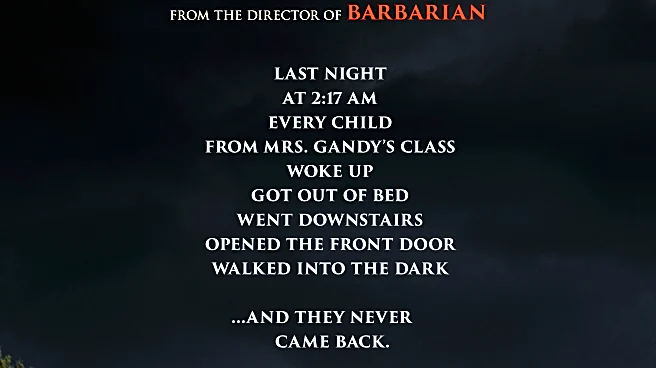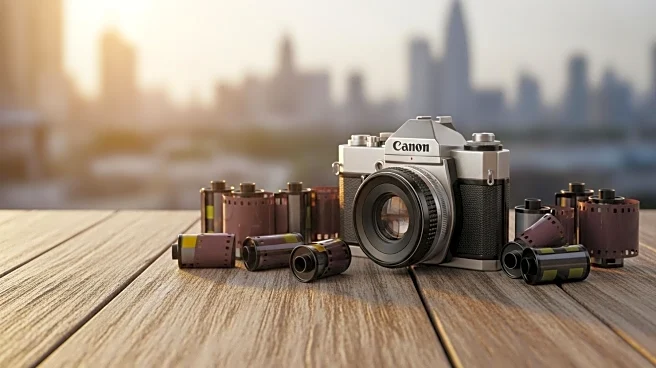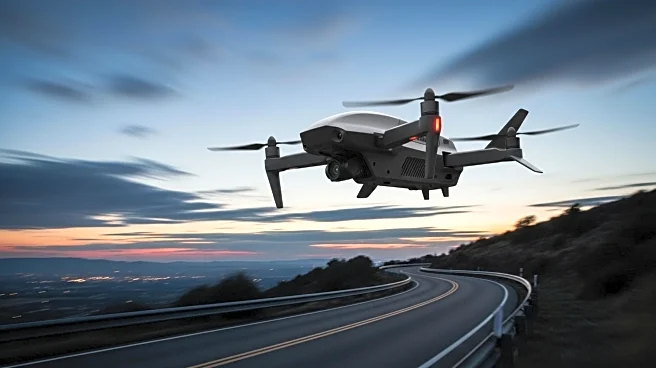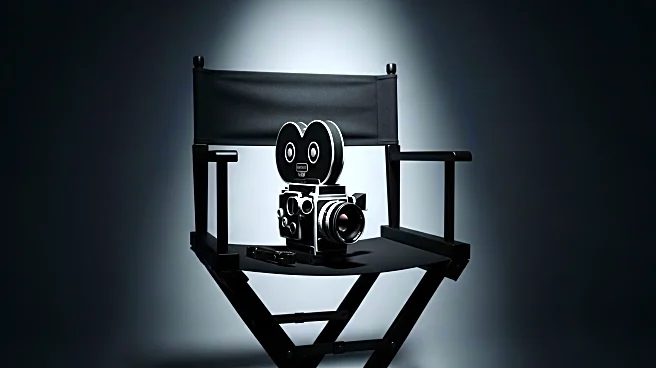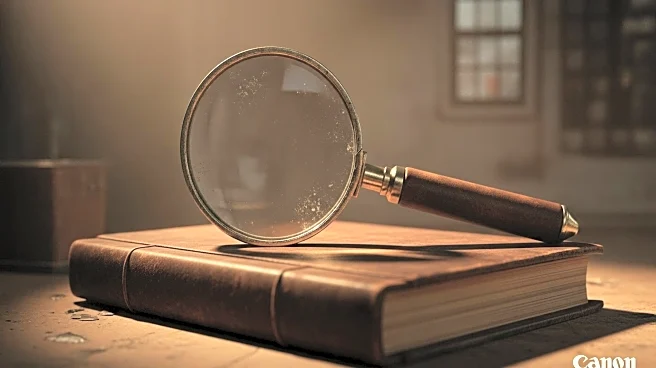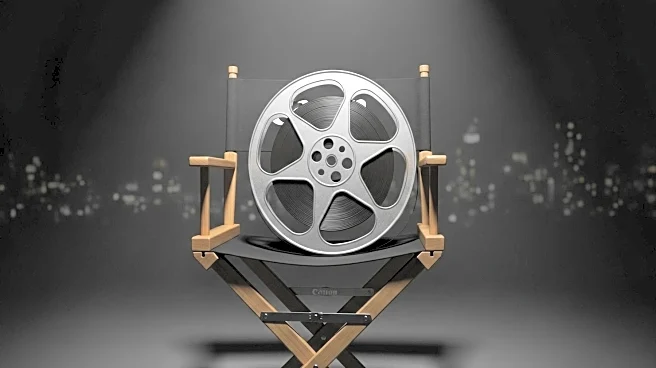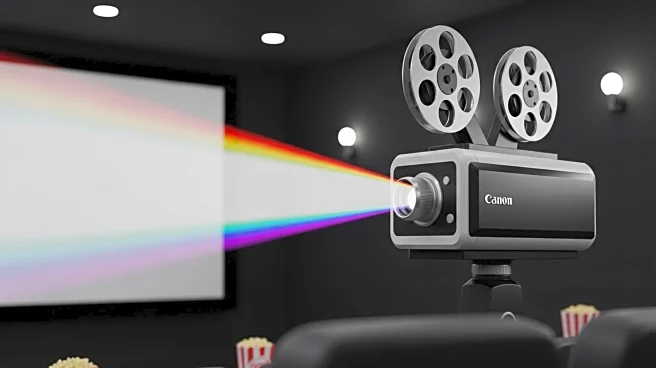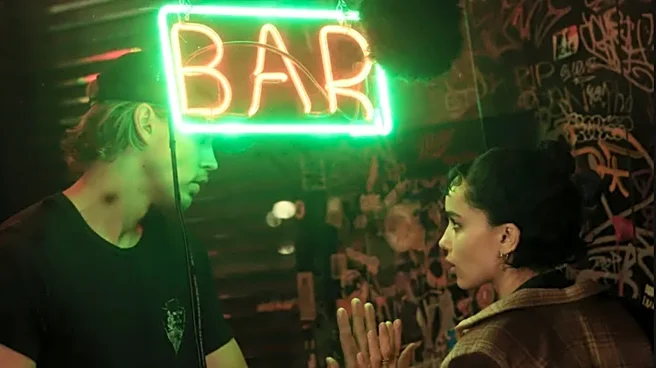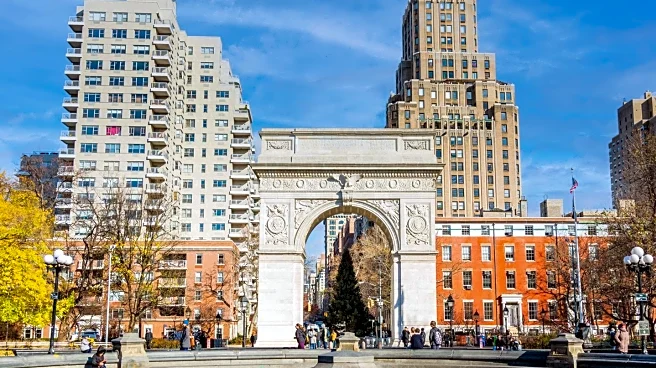What's Happening?
Filmmaker Darren Aronofsky has introduced a groundbreaking car chase scene in his latest film, 'Caught Stealing,' set in Flushing Meadows Corona Park, Queens, New York. The chase features a drone shot flying through the iconic Unisphere, a feat never before accomplished in filmmaking. Aronofsky, known for films like 'Black Swan' and 'Mother!', utilized drones to capture aerial shots, a technique that has revolutionized filmmaking by providing easier access to such perspectives. The film, set in Manhattan's Lower East Village during the 1990s, stars Austin Butler as Hank, a bartender caught in a dangerous situation due to his neighbor's entanglement with gangsters. The car chase occurs in the film's third act, with the characters cornered at Flushing Meadows. The sequence was made possible through collaboration with the New York City Parks Department and skilled drone operator Dexter Kennedy. Aronofsky's long-time collaborator, cinematographer Matthew Libatique, played a crucial role in executing the chase, which involved shooting in open environments and using innovative techniques to capture authentic performances.
Why It's Important?
The innovative use of drone technology in 'Caught Stealing' marks a significant advancement in filmmaking, allowing directors to capture complex aerial shots that were previously difficult or impossible to achieve. This development not only enhances the visual storytelling of films but also opens new possibilities for filmmakers to explore dynamic and immersive scenes. The collaboration with the New York City Parks Department highlights the importance of public-private partnerships in facilitating creative projects that utilize iconic urban landscapes. The film's setting in New York City, with its vivid portrayal of the 1990s Lower East Village, adds cultural and historical depth, appealing to audiences interested in the city's rich history. The successful execution of the car chase scene demonstrates the potential for filmmakers to push boundaries and innovate within the industry, potentially influencing future projects and encouraging the use of new technologies in cinematic storytelling.
What's Next?
Following the release of 'Caught Stealing,' the film industry may see increased interest in utilizing drone technology for capturing complex scenes, potentially leading to more collaborations between filmmakers and city authorities to access unique urban locations. The film's success could inspire other directors to explore similar techniques, further integrating drones into mainstream filmmaking. Additionally, the portrayal of New York City in the 1990s may spark renewed interest in films set in this era, encouraging filmmakers to explore historical narratives and urban settings. As audiences respond to the film's innovative approach, there may be discussions within the industry about the ethical and logistical considerations of using drones in filmmaking, particularly in densely populated areas.
Beyond the Headlines
The use of drones in filmmaking raises questions about the ethical implications of capturing footage in public spaces, particularly regarding privacy and safety. As drone technology becomes more prevalent, filmmakers and regulatory bodies may need to establish guidelines to ensure responsible use. The film's depiction of New York City in the 1990s also invites reflection on the cultural and social changes the city has undergone, potentially influencing public discourse on urban development and historical preservation. Furthermore, the collaboration between Aronofsky and Libatique highlights the importance of strong partnerships in creative projects, emphasizing the role of teamwork in achieving ambitious cinematic goals.



